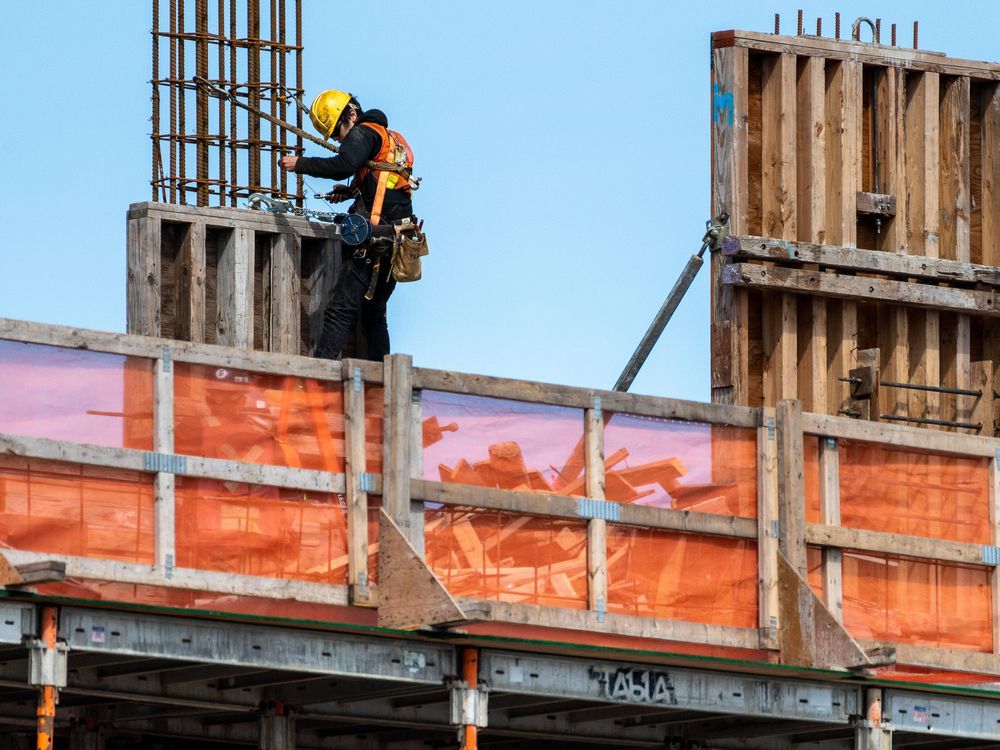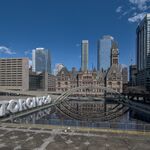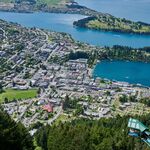potatopizzafan
Active Member
Anyone know what the deal is with this lot on 17th ave? Seems insane to me that this is just sitting there unused for so long. The lot must be worth a fortune
Great idea, but we don't even need the redevelopment. Now that's worth closing the road for, have a seasonal beer garden/park extension built between Crescent Heights Park and the edge of the bluff. Do it right and raise up the roadway so it's quality. Better yet divert the pathway behind a beer garden and have it right on the bluff.Still crazy to me that Crescent Road is for mansions, that should have been a commercial strip. How awesome would a patio there be?!
Several years ago there was this proposal: https://calgary.skyrisecities.com/f...-m-26s-pba-land-development-gibbs-gage.24993/ Never went anywhere, it does still show up on the PBA Developments page though.Anyone know what the deal is with this lot on 17th ave? Seems insane to me that this is just sitting there unused for so long. The lot must be worth a fortune
This sort of thing already happens a lot at St Patricks Island.It's an interesting one...maybe a case of right-thing for wrong-reasons. I used to live nearby and ride/run it all the time. While there were often people in cars who aren't really 'my kind of people' (can't quite find the right phrasing...I don't mean it in a passive-aggressive boomer kinda way), it was pretty rare that they were detrimental to my experience.
I can imagine it's a different case on summer nights, so restricting vehicle/parking access by time seems like the most sensible compromise to me. I also noticed a lot of people meeting up to exercise or walk - often one or both arriving in vehicles. It would be a shame to discourage that kind of activity.
This sparks a half-baked/hopelessly naive idea: can you create a more 'sanctioned' space for this evening crowd to gather? Like the west zoo lot on St Patrick's Island?
Some type of food/beer spot up there would be awesome. It would make a killing.Great idea, but we don't even need the redevelopment. Now that's worth closing the road for, have a seasonal beer garden/park extension built between Crescent Heights Park and the edge of the bluff. Do it right and raise up the roadway so it's quality. Better yet divert the pathway behind a beer garden and have it right on the bluff.
View attachment 391988
Ottawa is not known to be a particularly interesting or innovative city, but one thing they nailed is the beer garden in the public park idea, at least in a North American context. They have them all over the place, city centre and further out. They are simple and seasonal, but that's kind of the point. Something like this in Major's Hill Park would be a slam dunk in Crescent Heights:
View attachment 391989
View attachment 391990
Here's another Ottawa example in a far more suburban context. Kind of like Angel's in Edworthy Park, but way more casual with sprawling, temporary patios and pathway oriented:
View attachment 391991
In order for this to happen, Calgary would need to break (at least) 4 very tough mental barriers:
That's a lot to push through.
- It's okay for uses to mix such as parks/pathways/houses/seasonal beer gardens
- All perceived nuisances from mixing uses can be as handled via operational design and enforcement rather than blanket bans on activities (e.g. to avoid noise at night, no outdoor speakers and patio closes at 10pm v. to avoid noise at night, no patios are allowed ever, anywhere within walking distance)
- Residents of Crescent Heights (or any neighbourhood) have no unique right to the publicly owned space in their neighbourhood including the park and street
- Streets can be things other than for cars all year round and the world won't end
Normally I would say Crescents Heights probably isn't the place to start with my kind of "radical" Ottawa-style park reform, but the more I think about it it might be a great opportunity. After all, the arguably "more appropriate" places (e.g. a main street, Bow River Pathway etc.) can't seem to overcome these barriers either, likely because they have far more powerful resistors to reform via parks and transportation departments, existing festivals, stronger competing demands etc.
Crescent Heights has proven demand and there's a half block of Crescent Road that's over 100m from any house. Take all that suspicious loitering the community is concerned with, and put it to good work as patrons of a beer garden. Plus a new profit centre for the parks department

I live close from there, but me I think the road should be for allowing for cars. Exception for cars that are loud. Maybe there will be only one direction and little parking? I don't know.
Gates on Calgary’s Crescent Road being considered for master plan and safety issues - Calgary | Globalnews.ca
A popular spot for running, graduation photos and having lunch, Crescent Heights residents also say it comes with noise, garbage, speeding and crime.globalnews.ca
As someone who cycles on it a fair bit I wouldn't miss the vehicles, but it does reek of nimbyism.
Interesting development out of Edmonton. Seems to go far beyond the tweaks we are planning here in Calgary. I wonder if it will make our Council and Admin more ambitious or if the guidebook discussion has left everyone here running scared.

Edmonton's omnibus zoning bylaw would change entire city and limit development rules
The bylaw would boost density and housing types allowed, like small apartments, rowhouses, garden suites, and supportive housing.edmontonjournal.com
This part couldn't possibly backfire, right?Outside Anthony Henday Drive, residential lots have slightly different rules.
Also interesting...I'm sure there's a bit more nuance than that phrasing, but it'll be interesting to see how it plays out.Councillors on Tuesday also approved, in principle, another strategy that divides the city into 15 districts and tosses out potentially hundreds of neighbourhood plans.

Interesting development out of Edmonton. Seems to go far beyond the tweaks we are planning here in Calgary. I wonder if it will make our Council and Admin more ambitious or if the guidebook discussion has left everyone here running scared.

Edmonton's omnibus zoning bylaw would change entire city and limit development rules
The bylaw would boost density and housing types allowed, like small apartments, rowhouses, garden suites, and supportive housing.edmontonjournal.com




